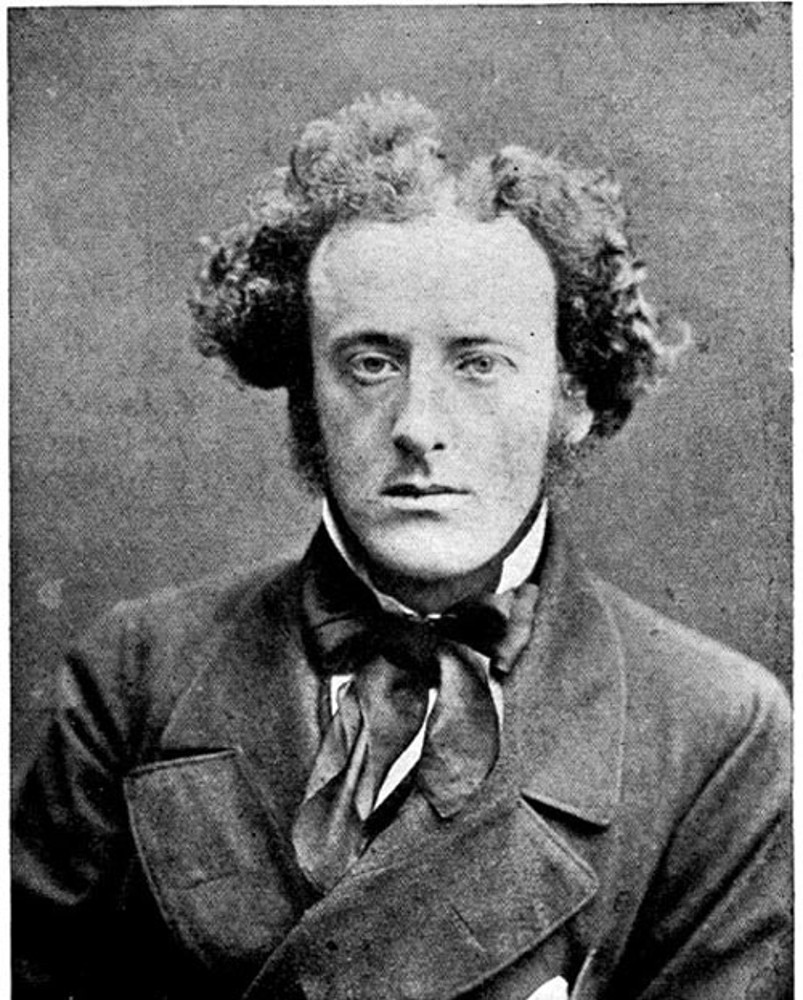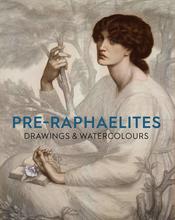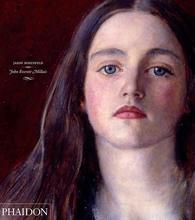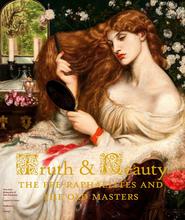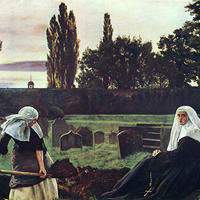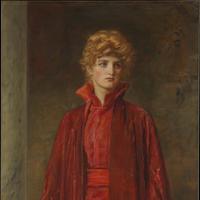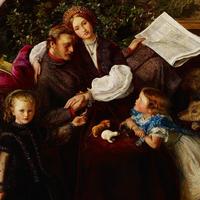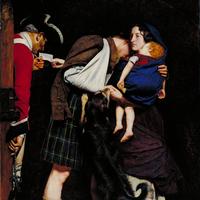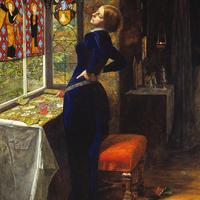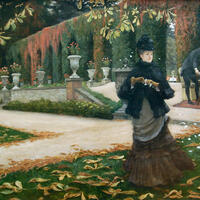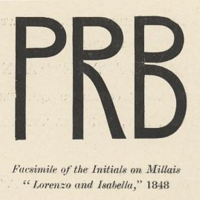More about John Everett Millais
- All
- Info
- Shop
Works by John Everett Millais

Contributor
John Everett Millais, the boy wonder of Victorian era painting.
Born in 1829 in Southampton, Hampshire, by 1838 Millais was well on his way to a life of artistic prestige. At the age of 11, he became the youngest student ever admitted to the Royal Academy in London and was affectionately known as The Child. Boy genius, indeed. Naturally, his young age and propensity for winning the academy awards didn’t make him very popular with his peers. However, he fell in with an ideal crowd of other misunderstood geniuses, William Holman Hunt and Dante Gabriel Rossetti.
In 1848, Millais, Rossetti and Holman Hunt embarked on an artistic venture that would rock the Victorian art world. They called themselves the Pre-Raphaelite Brotherhood (or PRB), scorning the Royal Academy’s focus on the Renaissance influence of Raphael. These idealists believed true art must beautify the mundane. Millais and his boys chose subjects that were typically religious or literary, and revered precise detail, vivid colors and the beauty in everything and the everyday. Moving away from the popular genre paintings of the period, Millais created masterpieces like Ophelia, a depiction of drowning that revels in the minutiae of the landscape and beauty of Ophelia’s watery death.
Millais’ talent was noticed by John Ruskin, a major player in the Victorian art world. Ruskin became a champion of Millais and the PRB. He wrote in praise of their paintings, touting their talents and potential for greatness, stating, “if they do not suffer themselves to be driven by harsh or careless criticism into rejection ... [the PRB] may, as they gain experience, lay in our England the foundations of a school of art nobler than the world has seen for 300 years.” He quickly became Millais’ patron, buying his works and helping to establish his fame.
They became more than artist and patron: Ruskin asked Millais to join him and his beautiful wife, Effie Ruskin, on their holiday in Scotland to paint Ruskin’s portrait. Not immune to scandal, our wonderboy and Effie struck up an attraction as he painted portraits of both her and Ruskin. It turned out that Ruskin was a bit terrified of women and their sexuality and had never consummated his marriage to Effie, so Effie and Millais were able to ride off into the sunset. In spite of the notorious and acrimonious annulment and the humiliation it brought, Ruskin remained a supporter of Millais and the PRB.
A happily married man and successful artist, Millais embarked on another, less debaucherous scandal. He started to move away from serious, morally uplifting work towards scenes that met the public demand for sentimentality and a good story. He officially sold out and moved away from the PRB ideals. Until he died, Millais truly believed in the art he created, claiming, “I may honestly say that I have never consciously placed an idle touch upon a canvas.” He built a lucrative practice as a portraitist, and as advertiser for Pear’s Soap in the 1870s.
His life was riveting and had just the right amount of scandal, and despite his early shunning of the Royal Academy and rejection of its teachings, Millais remained their darling for life, exhibiting at the Academy in 1846 and earning his associateship in 1853. He then became a full member in 1863. His Academy success continued to build to the point where he was dubbed a baronet in 1885, becoming the first English artist to be a member of the lowest hereditary British order. Finally, he conquered all, being elected President of the Royal Academy in 1896, shortly before he died. Makes you wonder how the rest of the PRB felt about their sell-out brother.
Sources
- Dickens, Charles. “Old Lamps for New Ones.” Household Words 12 (15 June, 1850), 12-14. http://www.engl.duq.edu/servus/PR_Critic/HW15jun50.html
- “John Everett Millais: English Painter & Illustrator.” ARC. Art REnewal Center, 2017. Web. 12 September 2017. http://www.artrenewal.org/pages/artist.php?artistid=77.
- “John Everett Millais.” Art UK. Art UK, 2017. Web. 8 September 2017. https://artuk.org/discover/artists/millais-john-everett-18291896.
- Ruskin, John. “The Pre-Raffaelites.” Letter to the Editor. London Times 20, 800 (13 May 1851), 8-9.
- Ruskin, John. “Letter in defence of the PRB.” Universite Paris Diderot. (26 May 1851).
- “Sir John Everett Millais, 1st Baronet.” Encyclopedia Britannica. Encyclopedia Britannica, 2017. Web. 10 September 2017. https://www.britannica.com/biography/Sir-John-Everett-Millais-1st-Baron….
- “Sir John Everett Millais, Bt.” Tate. Tate Britain, 2017. Web. 9 September 2017. http://www.tate.org.uk/art/artists/sir-john-everett-millais-bt-379.

Sr. Editor
Born June 8, 1829 - Died August 13, 1896
Millais was rather talented, at the young age of eleven he was given a place at the Royal Academy of Arts in London while his peers there were all very established artists.
He had a thing for painting other painters' wives. Though he only stole one of them. Introduced by her husband John Ruskin, Effie Rushkin annulled their married and ended up having eight children with Millais.
Millais also liked to paint his wife’s sister, Sophy Gray. A LOT. Some think he probably tapped that as well.
Featured Content
Here is what Wikipedia says about John Everett Millais
Sir John Everett Millais, 1st Baronet PRA (UK: /ˈmɪleɪ/ MIL-ay, US: /mɪˈleɪ/ mil-AY; 8 June 1829 – 13 August 1896) was an English painter and illustrator who was one of the founders of the Pre-Raphaelite Brotherhood. He was a child prodigy who, aged eleven, became the youngest student to enter the Royal Academy Schools. The Pre-Raphaelite Brotherhood was founded at his family home in London, at 83 Gower Street (now number 7). Millais became the most famous exponent of the style, his painting Christ in the House of His Parents (1849–50) generating considerable controversy, and he produced a picture that could serve as the embodiment of the historical and naturalist focus of the group, Ophelia, in 1851–52.
By the mid-1850s, Millais was moving away from the Pre-Raphaelite style to develop a new form of realism in his art. His later works were enormously successful, making Millais one of the wealthiest artists of his day, but some former admirers including William Morris saw this as a sell-out (Millais notoriously allowed one of his paintings to be used for a sentimental soap advertisement). While these and early 20th-century critics, reading art through the lens of Modernism, viewed much of his later production as wanting, this perspective has changed in recent decades, as his later works have come to be seen in the context of wider changes and advanced tendencies in the broader late nineteenth-century art world, and can now be seen as predictive of the art world of the present.
Millais's personal life has also played a significant role in his reputation. His wife Effie was formerly married to the critic John Ruskin, who had supported Millais's early work. The annulment of the Ruskin marriage and Effie's subsequent marriage to Millais have sometimes been linked to his change of style, but she became a powerful promoter of his work and they worked in concert to secure commissions and expand their social and intellectual circles.
Check out the full Wikipedia article about John Everett Millais

